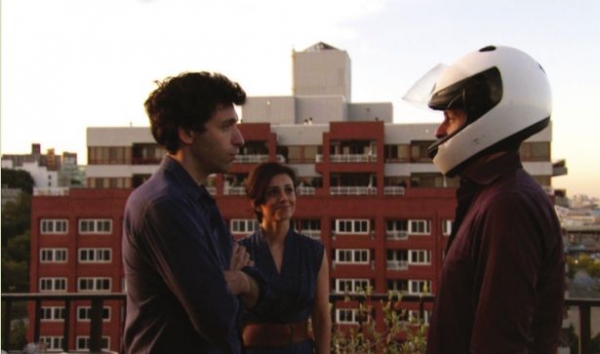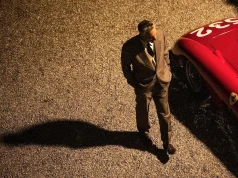
The first thing to note about Sam Neave’s indie thinkflick on love, Almost in Love, is that it’s made in practically the opposite way as a Hollywood film.
Editing in mainstream cinema typically hews to what Peter Watkins dubbed the “monoform,” a style of rapid cutting that barrages the viewer with images, leaving little time for contemplation of context. Almost in Love goes in the complete opposite direction.
Neave tells the story through two 40-minute-long shots, the first at a barbecue hosted by Sasha (Alex Karpovsky) and the second at his wedding party. It’s a tale of a doomed love triangle. Sasha was madly in love with Mia (Marjan Neshat) until his good friend Kyle (Gary Wilmes) stepped in and dated her, throwing a wrench into Sasha’s friendships with both.
When the film starts, it’s been a month since Sasha has talked to either. In the opening minutes of the party, we get a sense that all 10 or so guests are old friends. Sasha is prone to quote John Updike on a whim, and his friends lovingly indulge him, even as the points he make sort of meander into nothingness. Banal small talk occurs. The manliness of an outdoor electric grill is questioned. Everything goes swimmingly — Sasha has invited Mia over, to mend bridges — until a friend mistakenly invites Kyle over. The drama begins, mild, polite confrontations occur, and the long take ends with Sasha and Mia sharing their first, passionate kiss.
Fast-forward to the next take and we find ourselves at Sasha’s wedding after party at a house in the Hamptons.
Surprise, surprise, Mia ain’t the bride. We see the same group of friends (plus a new, previously un-introduced bride) discuss marriage and love and engage in more familial chatter before the movie ends, almost-but-not-quite resolving the main tension of the so-called storyline.
Neave’s favored technique is to put his characters in emotionally awkward positions and then zoom in on their faces, relying on his actors’ faces and the audience’s unease with broken social conventions to create the tension in the film.
The camera often lingers on the listener rather than the speaker during a conversation, and when one side of the party dies down, the audio switches to another conversation. Or, conversely, we hear one conversation while the camera focuses on someone just entering a room, sitting down alone, and looking for an opportunity to enter a conversation.
These strange filmmaking decisions nearly make Almost in Love interesting. But the love problems faced by the well-off young professionals are realistic to the point of being unremarkable. The most touching moments arise as a result of the connection the characters seem to share with one another, not because of any particular deep insight uttered by one of the characters. The actors admirably do their part to execute the director’s vision. Watching the concept’s execution makes for an entertaining viewing experience, yet at the end it feels like an experiment or a filmmaking exercise rather than a fully formed film.
Almost in Love plays at the Boedecker Theater on January 2-4.
Respond: [email protected]














